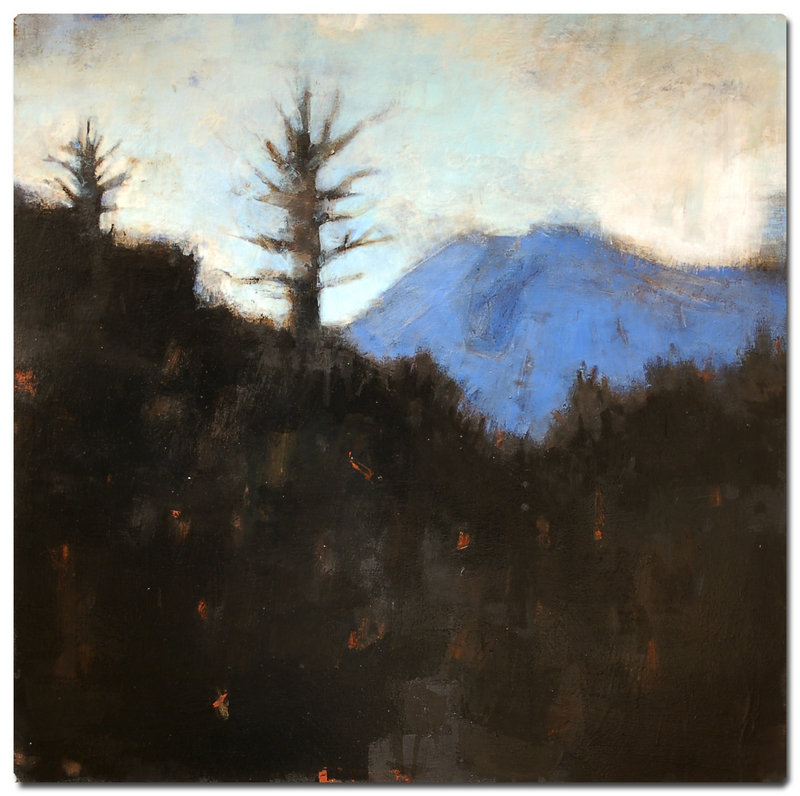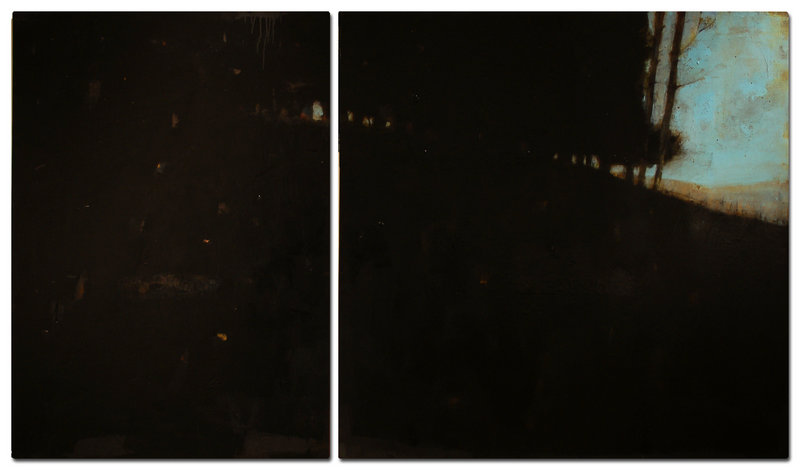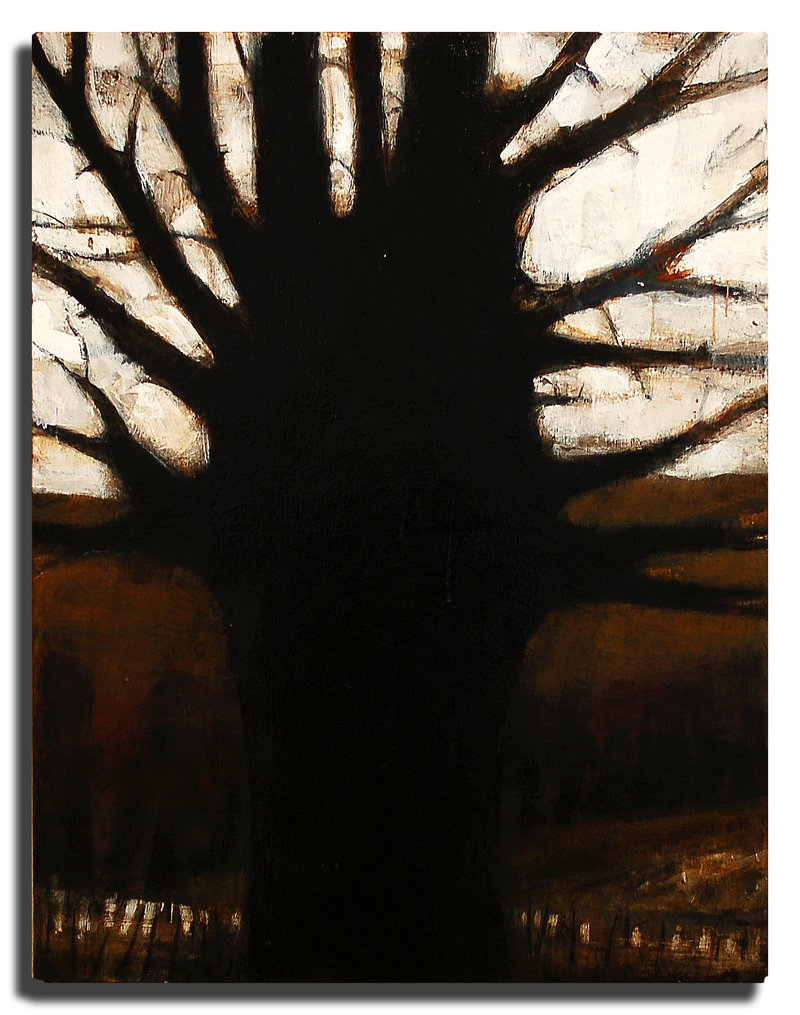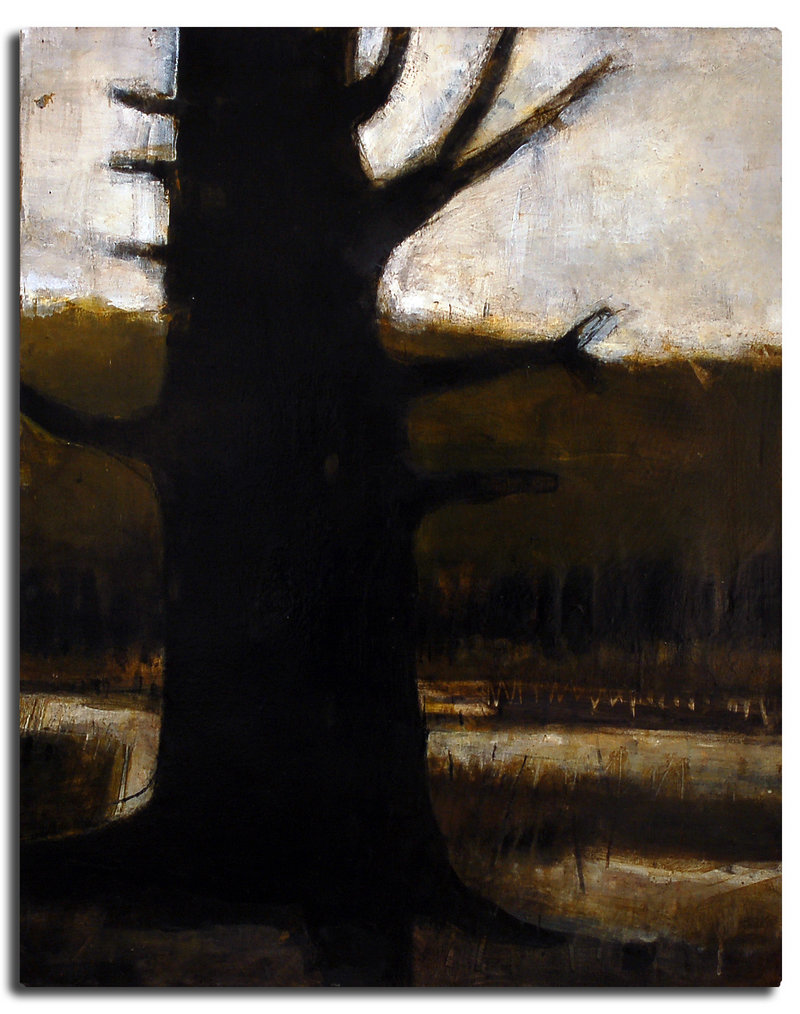Tom Hall’s “Paintings” at June Fitzpatrick Gallery in Portland is one of the best gallery shows I have ever seen in Maine.
Many of the paintings exude an undeniable and irresistible power. I mean that literally.
While it is a great show, not all of the 27 paintings and six monotypes are equally successful. That is partially why the show is so great.
There is something in painting that just can’t be faked.
Hall can’t automatically attain such authenticity merely by flicking some academic or technical switch. Seeing that helps to reveal the extraordinary qualities of his strongest pieces.
The paintings are spare landscapes painted loosely with a reduced palette of black, earthy neutrals and just a color or two. They are heavily layered, glazed and varnished.
And despite their few and simple forms, they are worked and worked so that even areas of solid black are unfathomably complex with matte and glossy finished layers burying each other in burly liquid skeins or scratchy flashes of bristly brushwork.
The first piece I saw – “Greenville I” – stopped me in my tracks. If it were in an Abstract Expressionism show, you might not even see it as a landscape. But it is a 5-by-3-foot vertical landscape virtually covered in dark chocolate black.
The upper left quadrant features a light cerulean blue, the bottom edge of which rises into the woods as ellipses of blue sky bits wandering shortsightedly into the late day forest.
The treetop canopy is the same organic black; its short fingers squeeze down through the sky bits to the ground below.
A couple of pike spindle trees shoot up straight and limbless between the canopy and the dry blue sky; they proffer elegiac whispers, as though the canvas could be a suspended American flag with the blue field rightly in the upper left.
Hall leaves a smeary bit of neutral ground revealed on the lower right to underscore what he has achieved with basically two colors.
It is a landscape, but an austere landscape, like a late Mark Rothko.
The matte bottom half insists on your body’s presence. It becomes your body, and the top is your sky-blue consciousness beside your subconscious – dark and virtually impenetrable.
Let me be clear: “Greenville I” hit me like a train.
We tend to think that painting is always just a representation, a fiction. But that is not a universal concept.
In Eastern Christianity, icons are sacred objects. Formline art of Northwest Native Americans is the vehicle of genuine numinous power.
We could talk about Tanka paintings, Zen calligraphy and so on, but the point is that paintings have long and widely been seen as conduits for forces not limited to the visible world. They aren’t simply snapshots of something else.
Traditionally, this has been associated with religion or spirituality. But postwar American painting such as Abstract Expressionism has been more like a practice in which your consciousness and your body encounter a thing which is a catalyst for pleasing self-awareness (as opposed to, say, pain’s paroxysms of unpleasant self-awareness).
This is how Hall’s best paintings achieve the power of mandalas or paintings by Rothko, Malevich, Ad Reinhardt or Barnet Newman.
Hall’s largest series of works features close-up views of tree trunks that begin below the canvas and rise vertically through the top. These echo your body’s orientation to the canvas with the spiky branches as your limbs.
While they may look dead, these figures confront you with the power of a living body. The blackness of the trees trumpets a presence — but something invisible like a void or a black hole.
Many of the trees have a reductive sculptural feel imbued by Hall’s painting the white sky between the tree branches as the top layer (think impasto). It’s a strange but effective approach — he excavates his solid forms from a block as though carving with opaque white.
These are simply structured paintings; a tree and a horizon line that differentiates land from sky.
This vague essentialism is why they succeed, but it’s also how Hall can use surface textures and glazed layers (he uses many layers of varnish, often stained so they look very old) with simple, strong designs in such a way that the paintings are not only striking and strong, but beautiful.
This compositional strength is apparent in his six very simple and handsome monotypes on handmade paper.
The blue mountains of Hall’s “Bigelow” paintings reverentially salute Hartley’s plaintive substance and bold solidity.
“Greenville II” is a large diptych subtly similar to its namesake. Dark and overwhelming, I have never seen a more powerfully ambitious painting by a Maine artist.
Deep under the myriad layers of glazed paint and varnish are what look like vinyl letters spelling “ANOTHER” and “CLEARCUT.” Grim and even brutal, Hall’s voice gurgles up from the abyss not as a knell but as a guttural call to arms.
This exhilarating show makes the case that Tom Hall is one of Maine’s best artists. It is the stuff of greatness.
Freelance writer Daniel Kany is an art historian who lives in Cumberland. He can be contacted at:
dankany@gmail.com
Send questions/comments to the editors.






Success. Please wait for the page to reload. If the page does not reload within 5 seconds, please refresh the page.
Enter your email and password to access comments.
Hi, to comment on stories you must . This profile is in addition to your subscription and website login.
Already have a commenting profile? .
Invalid username/password.
Please check your email to confirm and complete your registration.
Only subscribers are eligible to post comments. Please subscribe or login first for digital access. Here’s why.
Use the form below to reset your password. When you've submitted your account email, we will send an email with a reset code.